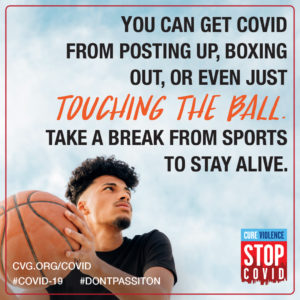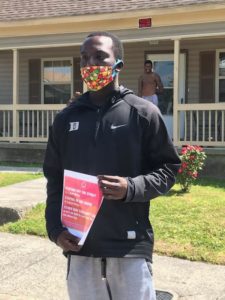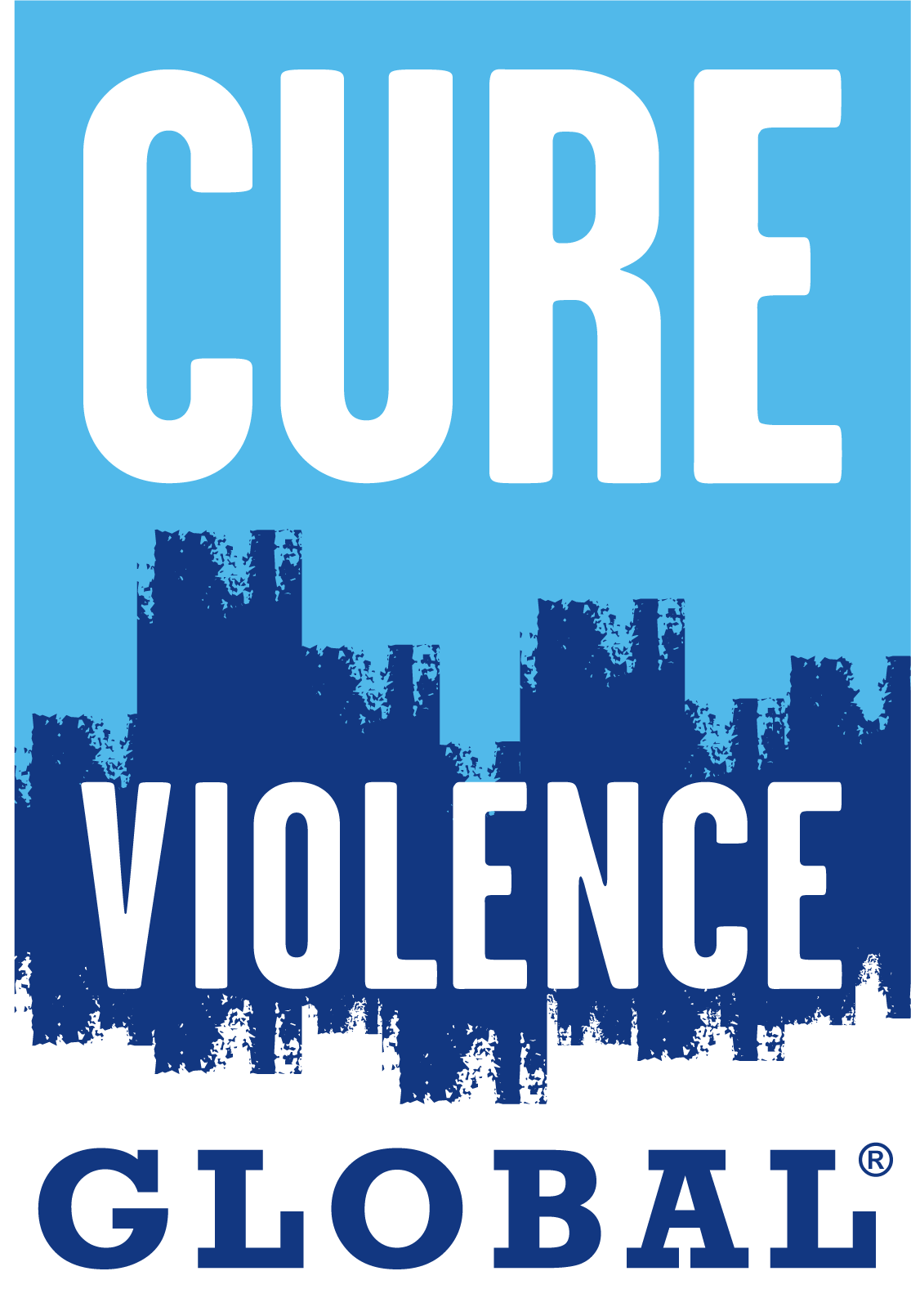Summary
- Cure Violence Global (CVG), through its network of close to 400 frontline workers, is helping to fill the COVID-19 response gap in under-resourced communities
- Many of CVG’s >100 sites are home to especially vulnerable and affected communities
- CVG’s network of frontline workers (Violence Interrupters and Outreach Workers) are able to help the hardest-to-reach groups that other public health workers often cannot
- These workers use their credibility and training in epidemiology, behavior/norms change, and public education campaigns to reach key individuals with critical COVID-19 messaging
- Frontline workers at sites are also assisting their communities with distribution of necessary materials like masks, food, and hand sanitizer
- In a matter of weeks, CVG repositioned its entire network to simultaneously focus on preventing violence and stopping the spread of COVID-19
 Over the past month, Cure Violence Global (CVG) has shifted its focus to helping its network of outreach workers and violence interrupters fight the COVID-19 pandemic in vulnerable, often neglected communities while continuing their violence prevention work. CVG operates from the unique vantage point of treating violence as a transmissible disease, which grants CVG ‘s workers an understanding of how viruses spread, how pandemics highlight pre-existing inequalities by disproportionately affecting marginalized groups, and how to stop a disease from spreading.
Over the past month, Cure Violence Global (CVG) has shifted its focus to helping its network of outreach workers and violence interrupters fight the COVID-19 pandemic in vulnerable, often neglected communities while continuing their violence prevention work. CVG operates from the unique vantage point of treating violence as a transmissible disease, which grants CVG ‘s workers an understanding of how viruses spread, how pandemics highlight pre-existing inequalities by disproportionately affecting marginalized groups, and how to stop a disease from spreading.
Thanks to the adaptable, hands-on nature of their work, CVG’s violence interrupters and outreach workers are stepping up to help vulnerable, hard-to-reach communities minimize COVID’s spread and to stay safe. Aided with their experience as credible, trusted messengers in their communities, plus their training in public health education and behavior/norm change, CVG’s violence interrupters and outreach workers are protecting neglected communities across the world against the coronavirus. This work is essential for CVG’s sites’ communities, as many of CVG’s sites are home to demographics that are especially vulnerable to the virus, due to pre-existing health conditions, food insecurity, status as essential workers, and crowded living conditions.
CVG’s workers have been educating their communities on best practices to stifle the virus’s spread. CVG’s sites across the U.S and Latin America & the Caribbean are conducting social media campaigns and distributing documents and visuals on the importance of social distancing, staying home, and washing hands. CVG’s workers are also redirecting their attention to assisting in their communities with distribution of vital resources like hand sanitizer, masks, food, and soap.
 Since the COVID-19 pandemic affects places and demographics in different ways, it is important to remember each community’s needs when designing aid programs to address the crisis. CVG’s workers’ close relationships to the communities they work in give them unique insight for crafting impactful messages tailored to their community. CVG’s sites are working with community organizations throughout the U.S. to create educational materials that are appropriate and persuasive to each specific location. These informational campaigns range in subjects from proper mask use, social distancing, safe smoking practices, and other facts about the virus and how it spreads. For example, in one neighborhood, outreach workers noticed people still playing basketball outside, so CVG designed a poster on the danger of transmitting the virus through sports.
Since the COVID-19 pandemic affects places and demographics in different ways, it is important to remember each community’s needs when designing aid programs to address the crisis. CVG’s workers’ close relationships to the communities they work in give them unique insight for crafting impactful messages tailored to their community. CVG’s sites are working with community organizations throughout the U.S. to create educational materials that are appropriate and persuasive to each specific location. These informational campaigns range in subjects from proper mask use, social distancing, safe smoking practices, and other facts about the virus and how it spreads. For example, in one neighborhood, outreach workers noticed people still playing basketball outside, so CVG designed a poster on the danger of transmitting the virus through sports.
As resources come in waves of scarcity and many individuals are forced into quarantine without the option to leave their house, violence in the home— including domestic violence, child abuse, and elder abuse— is on the rise. Victims of domestic violence are afraid of leaving their homes out of fear of the virus, and high levels of stress are leading to more violence in public spaces like grocery stores as well. In this fluctuating time, it is necessary for communities everywhere to have the educational and personal resources to combat the virus and decrease violence simultaneously, while abiding by social distancing.
CVG’s violence interrupters and outreach workers have also been maintaining their roles as mediators and violence preventers, safely from a distance. The work of violence interrupters is hands-on and personal, so they have been innovative in finding new ways to prevent violence and communicate to potentially violent individuals.
 In New York City, CVG’s sites have been organizing virtual shooting responses to gather support against violence and de-escalate violent situations with the voices of the community. In Brooklyn, one site responded to a shooting by sending out workers with a bullhorn to lead the response while livestreaming on Instagram. People, who in normal circumstances would have participated in the shooting response in person, participated via Instagram from their homes. In Greensboro, NC, members of the CVG site coordinated with hospitals to gain access to the Emergency Room to continue to provide mediation services to victims of violence. Sites across the U.S. and LAC are conducting video calls multiple times a day to their community contacts to check in on the status of conflicts and keep tensions cool, and community meetings have been replaced with widely attended Zoom calls.
In New York City, CVG’s sites have been organizing virtual shooting responses to gather support against violence and de-escalate violent situations with the voices of the community. In Brooklyn, one site responded to a shooting by sending out workers with a bullhorn to lead the response while livestreaming on Instagram. People, who in normal circumstances would have participated in the shooting response in person, participated via Instagram from their homes. In Greensboro, NC, members of the CVG site coordinated with hospitals to gain access to the Emergency Room to continue to provide mediation services to victims of violence. Sites across the U.S. and LAC are conducting video calls multiple times a day to their community contacts to check in on the status of conflicts and keep tensions cool, and community meetings have been replaced with widely attended Zoom calls.
In the face of the COVID-19 pandemic, CVG’s teams present a vision for the future— for the new normal of widespread health response. The CVG model is the blueprint for a system of public health workers with access to every community around the world that can respond quickly and effectively (with training) to whatever contagious problem that spreads in a community— from physical diseases like COVID, SARS, AIDS, and TB, to societal illnesses of shooting, bullying, hate, conflict, and war. These networks can address long-time inequalities by helping marginalized communities have a voice to express their needs and in turn, receive an adequate response to their cries.
In this time of uncertainty and anxiety, it is important to be resilient and receptive to new information. As CVG learns more about the pandemic and our communities’ needs, CVG’s sites will continue adapting and rising to the occasion to keep people safe, both from violence and the virus.


